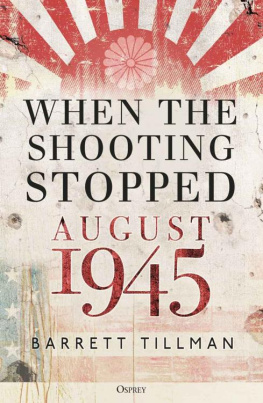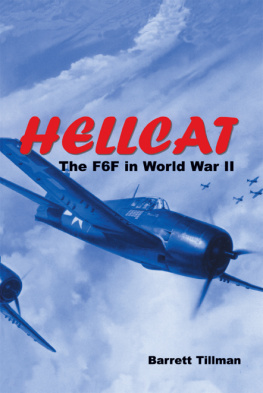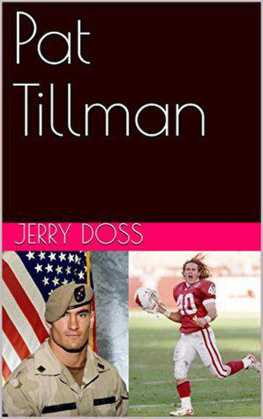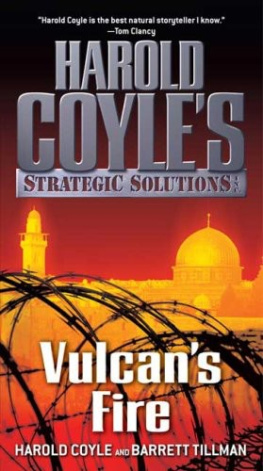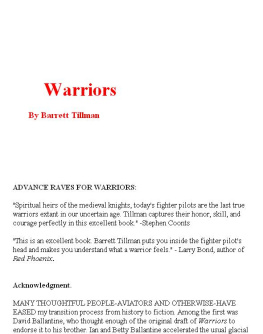Barrett Tillman - When the Shooting Stopped
Here you can read online Barrett Tillman - When the Shooting Stopped full text of the book (entire story) in english for free. Download pdf and epub, get meaning, cover and reviews about this ebook. year: 2022, publisher: Bloomsbury Publishing, genre: History. Description of the work, (preface) as well as reviews are available. Best literature library LitArk.com created for fans of good reading and offers a wide selection of genres:
Romance novel
Science fiction
Adventure
Detective
Science
History
Home and family
Prose
Art
Politics
Computer
Non-fiction
Religion
Business
Children
Humor
Choose a favorite category and find really read worthwhile books. Enjoy immersion in the world of imagination, feel the emotions of the characters or learn something new for yourself, make an fascinating discovery.
- Book:When the Shooting Stopped
- Author:
- Publisher:Bloomsbury Publishing
- Genre:
- Year:2022
- Rating:3 / 5
- Favourites:Add to favourites
- Your mark:
- 60
- 1
- 2
- 3
- 4
- 5
When the Shooting Stopped: summary, description and annotation
We offer to read an annotation, description, summary or preface (depends on what the author of the book "When the Shooting Stopped" wrote himself). If you haven't found the necessary information about the book — write in the comments, we will try to find it.
When the Shooting Stopped — read online for free the complete book (whole text) full work
Below is the text of the book, divided by pages. System saving the place of the last page read, allows you to conveniently read the book "When the Shooting Stopped" online for free, without having to search again every time where you left off. Put a bookmark, and you can go to the page where you finished reading at any time.
Font size:
Interval:
Bookmark:

For Sally, who suggested it.

Contents
Bogies seven oclock high!
In the era of radio communication, the warning of unidentified aircraft above and behind the friendlies crackled with bone-chilling intensity. Instinctively, the young Americans all aged between 19 and 26 craned their necks over their left shoulders. The sharp-eyed ensign in the trailing Hellcat had saved an even worse surprise for his seven squadron mates. He was going to add more when his flight leader interrupted: Theyre Japs!
At that point none of the carrier aviators needed further instruction. They extended their left arms to full throttle, coordinating right hands with rudder feet in steeply banked turns to meet the threat.
In the cockpits of a dozen Imperial Navy Mitsubishi fighters a mixture of nimbly elegant Zeros and potently ugly Jacks aces and rookies alike savored the setup. Their controller had placed them in almost perfect position for a bounce on the intruders just over spume-tossed gray waves washing Honshus eastern shore.
The 20 contesting fighter pilots shared much besides Japanese airspace. Minutes earlier the U.S. Third Fleet had radioed a ceasefire, ordering the days first strike mission to abort and return to base because Tokyo had accepted surrender. With elevated pulses, the Hellcat pilots stuffed that joyous news under the manholes of their consciousness as they reordered their priorities. Job one now was survival. Nobody wanted to succumb to the last man syndrome, to be the final casualty in a long, bitter, sanguinary war.
As the two American flights reversed into the diving Japanese dozen, gloved fingers curled around triggers in molded plastic stick grips. In that desperate maneuver the four-plane divisions lost cohesion as wingmen slid abeam of section leaders, breaking into fighting pairs. Any semblance of organization was lost as both formations shredded at the merge, hosing off .50-caliber machine gun ammunition in one direction and 20mm cannon rounds in the other.
Both sides scored hits; both sides took losses. One Hellcat caught a volley of explosive rounds and pitched upward, out of control. Another broke away, streaming smoke, seeking the sanctuary of the sea.
A Zeke lost a head-on encounter with six Browning .50s, gushed flame, and snap-rolled to destruction.
Then began the manic, unchoreographed dance that was dogfighting. If the war was seemingly over, the dying was not.
NOTES
Honshu is the largest and most populated island of Japan; the literal translation means main province.Seen from space, Earths dominant feature is the Pacific Ocean. Its 62.5 million square miles cover more than one third of the planets total surface. Nothing else comes close. For comparison, San Diego to Tokyo is 5,500 statute miles; even from Honolulu, Tokyo is over 3,800 miles, while in comparison the distance from New York to London is less than 3,500 miles. By August 1945, the wartime generation of Americans had received a concentrated course in geography, including the vast blue expanse of the Pacific in particular. Few had probably ever heard of Pearl Harbor in 1941, but four years later the large majority knew the significance of Guadalcanal, Saipan, Leyte Gulf, Iwo Jima, and Okinawa.
Indeed, in the 45 months between December 1941 and August 1945, the Pacific Theater of Operations absorbed the attention of the American nation and military longer than any other. Despite the Allied grand strategy of Germany first, after the Japanese attack on Pearl Harbor, Hawaii, the U.S. was irrevocably committed to confronting Tokyo as a matter of urgent priority. American ground troops did not engage the Western Axis in North Africa until November 1942 and did not fight on the European mainland until almost a year later. But U.S. forces were immediately involved in the Pacific and would be until the wars end.
Allied forces were, of course, engaged elsewhere, most notably in the China-Burma-India (CBI) Theater. But the development of what British Prime Minister Winston Churchill called triphibious operations was necessarily perfected in the Pacific a melding of land, sea, and air forces that took giant steps across 161 degrees of longitude from Honolulu to Tokyo. It was a long, bloody slog, averaging an advance of merely three miles per day. The human toll paid by American citizens on that road reached some 108,000 battle deaths, more than one third of the total U.S. wartime toll. In comparison, American combat losses in the Atlantic-European-Mediterranean theaters combined had reached some 185,900 by the time the fighting there ended with Victory-in-Europe Day on May 9, 1945.
By the summer of 1945 the nation was distressingly accustomed to mounting attrition. The first week in August alone added a further 7,489 dead, missing, or wounded, bringing the wartime total to 1,068,216 casualties. That meant 1,070 souls a day the price of doing wartime business.
***
But there was hope growing, even soaring hope. The stunning announcements of atomic bombs dropped on Hiroshima and Nagasaki on August 6 and 9 respectively seemed sure to force Tokyo over the tipping point. Employment of atomic bombs had followed the Allies surrender demand issued from Potsdam, Germany, in July, two weeks before Hiroshima. Without actually indicating the use of nuclear weapons, the Allied declaration had stated, We call upon the government of Japan to proclaim now the unconditional surrender of all Japanese armed forces, and to provide proper and adequate assurances of their good faith in such action. The alternative for Japan is prompt and utter destruction.
To most Americans, the threat of prompt and utter destruction was justified, however it was delivered. To a war-weary population at home the immense devastation of conventional (and ultimately nuclear) bombing seemed only fitting, given revelations of Japanese atrocities from the Rape of Nanking in 1937 to the Bataan Death March in 1942, to attacks on Allied hospital ships in 1944 and 1945.
So too did they recall the apparent treachery of December 7, 1941 when two envoys were filmed visiting the U.S. State Department in Washington while bombs and torpedoes slaughtered U.S. ships, sailors, and soldiers in Hawaii.
Americas boiling rage was fueled by the memory of Pearl Harbor over the subsequent four long years. Only much later did the true facts emerge: Tokyo had intended minimal notice of impending hostilities, but delays in decoding the complex secret messages in Washington had upset the schedule.
What few understand today is the vast gap in fact more of a chasm in the cultural ethos of East and West at that point in time. As the events of early to mid-August would show, the dropping of one, or indeed, two atomic bombs in no way guaranteed Japanese capitulation.
In the war zones, at home and abroad, people treaded a tenuous trail between continuing war and impending peace. When the peace finally came, it arrived at a heavy cost, not least of all the drawing of new battle lines in the forthcoming Cold War.
Indeed, the events of August 1945 influenced the world as nothing since, and their effects still reverberate today.
WINDS OF CHANGE, AUGUST 1AUGUST 2
Rumors wafted on global winds throughout the first half of August 1945: Tokyo was on the brink of surrendering; Tokyo was sure to fight to the bitter end. The thousands of sailors and airmen of the U.S. Pacific Fleet grew especially edgy; after all, they were most closely engaged against the Japanese Empire.
The geographic noose had been drawn taut around Imperial Japans vulnerable neck in the preceding six months. In late March, U.S. Marines had seized Iwo Jima, 750 miles south of Tokyo. Securing that base put the Home Islands in range of land-based fighters to escort the Boeing B-29 firebirds from the Marianas that incinerated Japans urban-industrial areas in the subsequent weeks and months.
Next pageFont size:
Interval:
Bookmark:
Similar books «When the Shooting Stopped»
Look at similar books to When the Shooting Stopped. We have selected literature similar in name and meaning in the hope of providing readers with more options to find new, interesting, not yet read works.
Discussion, reviews of the book When the Shooting Stopped and just readers' own opinions. Leave your comments, write what you think about the work, its meaning or the main characters. Specify what exactly you liked and what you didn't like, and why you think so.

